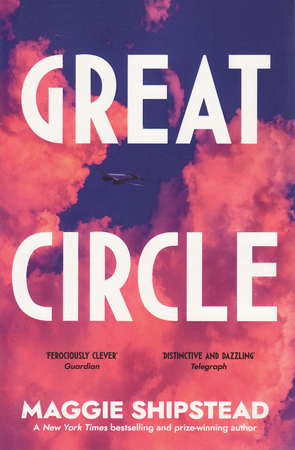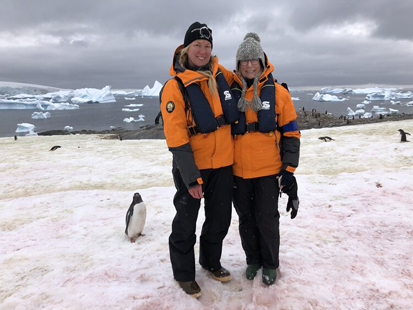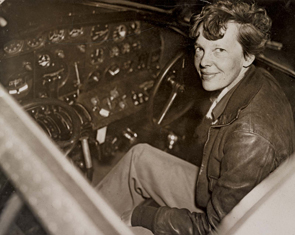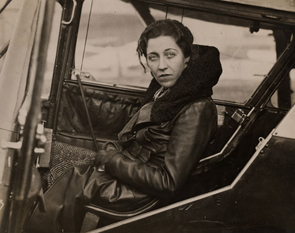Maggie Shipstead’s third novel, Great Circle, is primarily the story of Marian Graves, who begins her career as a pilot in the 1930s, flying for a booktlegger, Barlcay Macqueen, and the story of Hadley Baxter, a contemporary actress who is about to play Marian in a new biopic, Peregrine, which focuses on Marian’s attempt to fly her C-47 Dakota in a great circle around the world. In flying parlance, a great circle is a circumnavigation of the globe following the shortest route possible. In Marian’s case, her flight begins in Auckland New Zealand, is planned to head north and across the Arctic Circle, and then south again to eventually traverse the Antarctic continent, before returning to New Zealand. But Marian and her navigator, Eddie Bloom, never make it back. They disappear somewhere near the Ross Ice Shelf, where Marian’s journal will later be discovered, wrapped in a life jacket. It will be published and receive some modest attention, and later it will inspire a novel, Wings of Peregrine, upon which the movie will be based. It is no spoiler to speak of Eddie and Marian’s disappearance, since these details are revealed in the opening pages of the novel.
For Hadley Baxter, Marian is enigmatic – lost to time – and compelling. Hadley, who lost her own parents to a plane crash when she was only a child, feels a connection to Marian’s tragedy – not her disappearance but the loss of Marian’s parents to the sinking of the Josephina Eterna during World War I. Marian’s mother, Annabel, who it is obvious to the reader suffers post-natal depression, simply disappears the night the ship sinks, while Marian’s father’s loss to Marian and her twin brother, Jamie, is slower and crueller. As the captain of the ship, Addison Graves has little choice but to climb aboard a life raft with his two infant children when he cannot find his wife. He is subsequently sentenced to nine years in prison, and never recovers from the reputational loss of being thought a coward. His release from prison is another significant disappearance in a book that is filled with disappearances and absences. He returns from prison to spend the night with his brother, Wallace, who has been doing his best to raise the twins, but Addison is gone the next morning before ever introducing himself to the children.
Shipstead’s use of the parallel narratives is a device common in Young Adult Fiction where it sometimes feels contrived. But the connections between the narratives feels organic here. The loss of Hadley’s parents to a plane crash, along with her being raised by an uncle, as were Marian and Jamie, helps us to understand her growing connection to the role of Marian, rather than it feeling like a device. This is, in part, because Hadley’s motivations are grounded in her own need. Hadley has become a star, first in a television sitcom for kids, The Big-Time Life of Katie McGee, and later in a movie franchise, Archangel, from which she has just been fired after the vituperative social media backlash for her breaking the illusion of romance with her co-star, Oliver Trappman, when she sleeps with another man. Hadley seeks redemption, a new direction, and when she imagines the part of Marian, she also imagines the accolades of her comeback, holding an Oscar above her head. On the whole, the echoes and parallels between the stories are subtle, and well executed.
Great Circle has a broad historical backdrop, spanning most of the twentieth century from before World War I, through the prohibition era in America and World War II, and into the twenty first century. A common theme throughout this timeframe is that of identity and autonomy. Marian is first inspired to fly by the appearance of the Flying Brayfogles, Felix and Trixie, a barnstorming couple who accidently swoop close as Marian rides a horse. “She was at an age when the future adult rattles the child’s bones like the bars of a cage,” we are told, as Marian looks up and realises what she wants for her future. It is wonderful imagery, the idea of the body as a cage for desire and ambition, as so much of the story of Marian Graves is the story of pushing against social limitations upon her sex. Marian is both freed and imprisoned by Barclay Macqueen, who provides her the means to fly, but expects her to adopt a traditional female role as mother and housekeeper when they are married (just as gains made by female pilots in World War II are a matter of expedience rather than true equality). As a young girl, Marian disguises herself as a boy to get work, and in the background of the narrative is the story of a native American woman, Sitting-in-the-Water-Grizzly, who lives as a man, even marries a woman, so as to attain social status; possibly, also, because she understands her gendered identity is not defined by her body. It’s a struggle both Marian and Hadley will undergo; to crawl out from under the social expectations placed upon, and prejudices against, their sex. To this extent, Great Circle connects with many contemporary issues concerning gender and identity, despite its historical setting.
But it is not as though Great Circle steps outside the bounds of historical reality. While Marian Graves may be a fictional pilot, the novel’s short digressions remind us about the celebrity status of pilots who pushed their physical limitations at the time, as well as their planes. Shipstead recounts the exploits of female pilots like Elinor Smith, and Amy Johnson. Like her more famous counterpart, Amelia Earhart, Johnson also disappeared, somewhere in the Thames estuary, while Earhart disappeared in an attempt to fly her own great circle around the world. Earhart feels like an inspiration for Marian’s story, but she is also one of the many echoes and parallels in the narrative that help to define Marian for us and understand the obstacles she faces.
Flight, in Great Circle, follows the tradition of grand movement by the individual, to explore and to define the limits of space and claim territory. The flights of early navigators are an attempt to define an identity in the world as much as anything else; as a representation of self. But flying also reveals the limitations of self, which the novel parallels with the problems of history and narrative; about the limitations of reclaiming the past and what can be known of any individual. Marian’s brother, Jamie, is a talented artist, but his attempts to capture an understanding of a wider world leads him to experiment with distorted perspective to represent his understanding of reality beyond the understanding of a single individual. As an artist for the navy in World War II, the logical limits of representation are met when he attempts to record a battle in a series of sketches which he later realises are nonsensical. For Hadley, it is the growing realisation that the film she works upon, and her representation of Marian’s character, are separate to the unknowable reality of Marian as an individual. The problem of Marian’s sexuality, alone, is something she knows the Hollywood machine cannot grasp, just as the novel upon which the film is based is filtered through the perspective of its author. At the heart of every individual, of every event in life, is an unknowable mystery, like the dark crevasse of a glacier Marian flies over while heading to Canada. The crevasse is the threat of annihilation, the potential of immediate disaster, which returns to Marian’s mind over and over, like an existential threat defined by the apparent limitations of her own femininity.
But, first and foremost, Great Circle is an engrossing and entertaining book. It is a family saga, filled with details, digressions and entertaining moments we expect from such as story. It’s inspiring, because while it is fictional it is grounded in reality. But as a contemporary novel, it is topical because the real history of the past is refracted through the prism of current debates about gender, authenticity and identity. Great Circle is a great novel.

 RSS Feed
RSS Feed Facebook
Facebook Instagram
Instagram YouTube
YouTube Subscribe to our Newsletter
Subscribe to our Newsletter








No one has commented yet. Be the first!